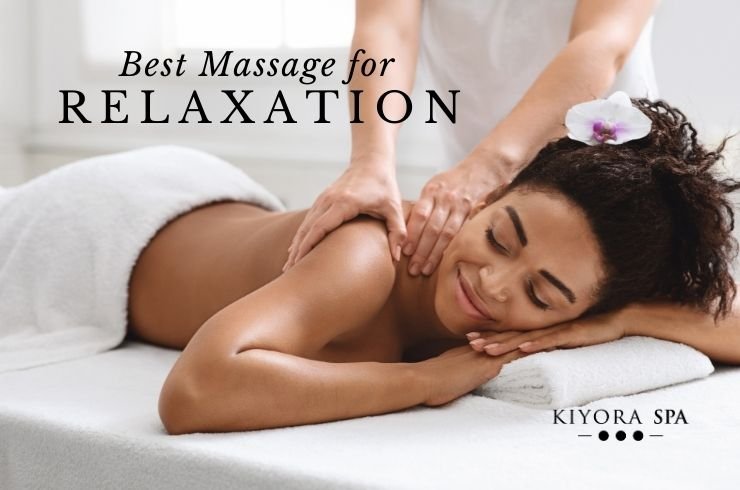Can aromatherapy massages in Chiang Mai help with specific health concerns? Discover the surprising health…
Health benefits of massage go far beyond just feeling relaxed—did you know it can boost your immune system and improve your sleep? Imagine unwinding on a massage table and walking away with more than just a good vibe. The right massage can help with muscle recovery, reduce anxiety, and even support your body’s natural healing process. If you think a massage is just a luxury, think again!
The health benefits of massage include reducing stress, easing muscle pain, improving circulation, boosting mental health, and enhancing overall well-being, offering natural and effective relief for both mind and body.
Massage therapy works by relaxing tight muscles, improving blood flow, and triggering the release of feel-good hormones like serotonin. It’s not just about relaxation—massage can help with recovery after workouts, reduce anxiety, and even improve sleep. Different techniques, like Swedish or Thai massage, offer unique benefits for specific needs. There’s a lot more to explore, from how massage affects your immune system to its role in chronic pain management.
Introduction to Massage Therapy
Massage therapy has been practiced for thousands of years, offering more than just relaxation. It involves using hands-on techniques to manipulate muscles, tendons, and soft tissues to boost physical and mental well-being.
Whether easing muscle tension, reducing stress, or promoting self-care, massage therapy provides many benefits. Techniques like Swedish, Thai, and deep tissue massages cater to different needs, from gentle relaxation to targeted pain relief.
Definition and Overview of Massage Therapy
Massage therapy is a therapeutic practice where professionals apply pressure to the body’s soft tissues, promoting relaxation, pain relief, and improved circulation. The American Massage Therapy Association (AMTA) highlights its effectiveness in supporting the body’s natural healing processes.

Different styles serve unique purposes—Swedish massage offers gentle relaxation, while Thai massage, popular in Chiang Mai, combines stretching and pressure. Many, like Sarah, a stressed office worker, find regular massages improve sleep and reduce discomfort. Massage is not only for pain relief but also for enhancing overall health and well-being.
Physical Benefits of Massage
Massage therapy does wonders for the body. From improved circulation to reduced muscle stiffness, the physical benefits are wide-ranging. It’s not just about relaxation—massage plays a crucial role in supporting the body’s physical functions, aiding recovery, and keeping you flexible. If you’re considering a massage, knowing the real physical benefits can help you understand why it’s worth it.
Improved Circulation
One of the top benefits of massage therapy is improved circulation. The pressure applied during a massage helps stimulate blood flow, which can be especially beneficial for those who sit for long periods or are recovering from an injury. Enhanced circulation delivers more oxygen and nutrients to muscles and tissues, speeding up recovery.
Studies show that better blood flow helps with healing and can even reduce fatigue. For example, after a long flight, a good massage can help you feel less sluggish and more energized.
Decreased Muscle Stiffness
Muscle stiffness is a common issue, whether from intense workouts or sitting too long at a desk. Massage works by loosening up tight muscles, helping you move more easily and reducing discomfort.
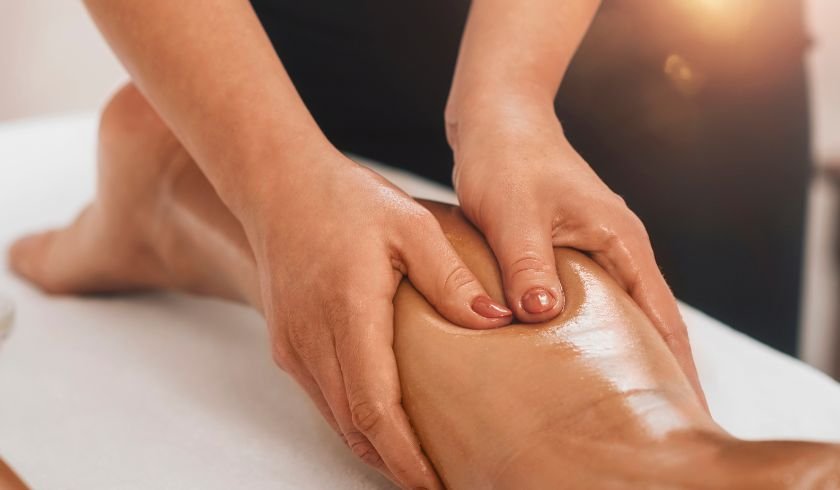
Regular massages can prevent stiffness from building up, allowing for better mobility. Many people, including athletes and office workers, report feeling significantly more limber and relaxed after a good session.
Decreased Joint Inflammation
Joint inflammation, especially in conditions like arthritis, can be painful and debilitating. Massage therapy can help by reducing inflammation and easing pain around the joints.
Studies show that massage can lower the production of stress hormones, which are linked to inflammation. Over time, this can result in better mobility and less discomfort, particularly for people with chronic joint conditions.
Enhanced Flexibility
Massage isn’t just for sore muscles—it also helps improve flexibility. Stretching the muscles during a massage helps increase their length and reduces tightness. This can make movements easier and more fluid, especially for those involved in sports or physical activities.
Regular massages can also prevent injuries by helping muscles stay more pliable and less prone to strain.
Quicker Recovery Between Workouts
For those who push themselves during workouts, massage can be a game-changer in recovery. It reduces muscle soreness, promotes healing, and speeds up recovery time.
The process helps release tension built up in the muscles, which in turn helps the body recover faster. For athletes or gym-goers, incorporating regular massages can make a huge difference in maintaining peak performance.
Mental and Emotional Benefits
Massage therapy isn’t just a treat for the body—it can work wonders for your mind, too. By reducing stress and anxiety, improving mood, and enhancing sleep, it plays a vital role in emotional well-being. After all, taking care of your mental health is just as important as physical health.

Let’s explore the powerful mental and emotional benefits that massage can bring.
Stress Reduction
One of the most well-known benefits of massage therapy is its ability to reduce stress. The soothing touch of a therapist helps lower cortisol, the body’s stress hormone.
With decreased cortisol levels, your body feels more relaxed, and your mind clears. Studies have shown that even a single massage session can lower stress significantly. People report feeling a sense of calm and relief, making it a popular choice for those dealing with high-pressure jobs or personal stress.
Decreased Anxiety and Depression
Massage therapy has been found to help reduce symptoms of anxiety and depression. The relaxation brought on by massage promotes the release of endorphins—your body’s natural mood enhancers.
Research shows that regular massage can lower anxiety and help improve emotional balance. For example, after consistent massages, clients often experience a greater sense of calm and overall emotional stability.
Deepened Relaxation
Massage therapy is a powerful way to achieve deep relaxation. The gentle, rhythmic motions of a skilled therapist help soothe the nervous system, encouraging the body to shift from a state of tension to one of calm. If you’re wondering which massage types in Chiang Mai are best for relaxation, you’ll find that traditional Thai massage, aromatherapy, and hot stone massages are all excellent choices.
During a massage, muscles naturally loosen, breathing slows, and the mind begins to quiet. This state of relaxation not only feels good in the moment but also has lasting effects, promoting better sleep, reduced stress, and an overall sense of well-being.
Improved Mood
Feeling down? A good massage could be just the mood booster you need. By stimulating the production of feel-good hormones like serotonin and dopamine, massage helps elevate mood.
Even people who don’t suffer from serious anxiety or depression notice a general improvement in their mood after a session. In fact, a quick massage is sometimes all it takes to put a smile back on your face.
Better Quality of Sleep
If sleep eludes you, massage therapy could help. The relaxation provided by massage helps reduce muscle tension, lower stress, and calm the nervous system, leading to deeper, more restful sleep.

Studies show that people who receive regular massages tend to sleep better and wake up feeling more refreshed. So, if you’re tossing and turning at night, consider a massage as a natural way to catch some better Zzz’s.
Massage for Specific Health Conditions
Massage therapy is known for its versatility in treating various health conditions. Whether it’s easing headaches, supporting recovery after surgery, or helping manage fibromyalgia, massage can be a powerful tool.
Let’s dive into how massage can provide relief for specific health issues and improve quality of life.
Relief from Headaches
Many people struggle with frequent headaches or migraines, but massage therapy offers a natural remedy. By applying pressure to key points, massage can relax tense muscles and reduce the frequency of headaches.
Studies show that regular massages can help alleviate both tension headaches and migraines. This can be a game-changer for those who rely on medication to find relief.
Management of Digestive Disorders
Massage therapy can even assist with digestive issues, such as bloating, constipation, and irritable bowel syndrome (IBS). Gentle abdominal massage techniques help stimulate bowel movements and improve circulation, promoting better digestion.
Many people report feeling less bloated and more comfortable after a few sessions. It’s a soothing way to support your gut health naturally.
Support for Fibromyalgia Patients
For fibromyalgia patients, living with chronic pain is a daily challenge. Massage offers a safe and effective way to relieve muscle pain and stiffness associated with the condition.
Research suggests that massage can help reduce the severity of symptoms, improve mobility, and boost overall well-being. Many fibromyalgia sufferers use massage therapy as part of their comprehensive pain management plan.
Assistance in Postoperative Recovery
Recovering from surgery can be tough, but massage therapy can speed up the healing process. It promotes blood flow to injured tissues, reduces swelling, and eases muscle tension around the surgical area.
Doctors often recommend massage to improve postoperative mobility and prevent scar tissue buildup. Many patients find that massage helps them recover faster and more comfortably.
Alleviation of Sports Injuries
Athletes and fitness enthusiasts know that injuries are part of the game. Massage therapy is an essential part of recovery for muscle strains, sprains, and even joint injuries. It helps reduce inflammation, alleviate pain, and prevent muscle tightness.
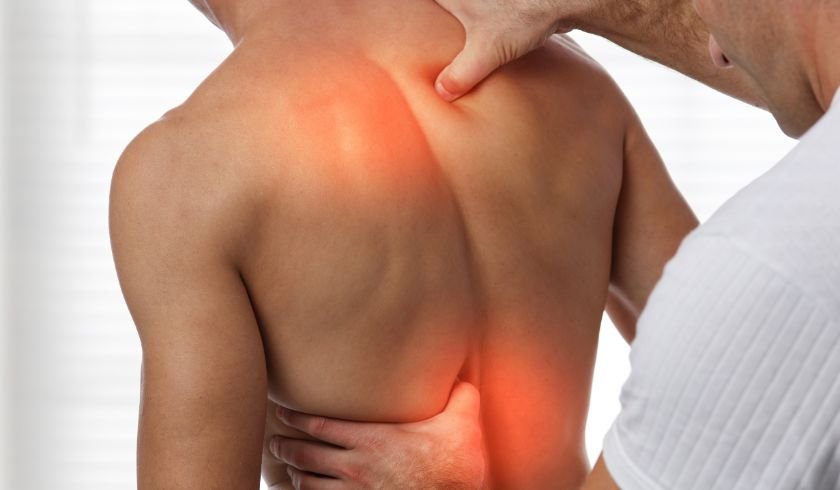
Sports massage techniques target specific muscle groups to enhance flexibility and improve overall performance. Whether you’re an amateur or a professional, massage can keep you in top shape.
Relief from Jet Lag
If you’re visiting Chiang Mai and struggling with jet lag, a massage for jet lag in Chiang Mai can make a world of difference. The right massage techniques, such as Swedish massage and lymphatic drainage, can help you shake off fatigue, improve circulation, and adjust more quickly to the new time zone.
Many travelers find that a quick session at a reputable spa, like Kiyora Spa, not only boosts energy but also provides that refreshed “just landed” feeling—helping you make the most of your
Relief from Office Syndrome
Whether you’re a traveler working remotely or a local living in Chiang Mai, long hours at a desk can lead to “office syndrome”—pain and stiffness in the neck, shoulders, and back. An office syndrome massage in Chiang Mai offers targeted relief by easing muscle tension and improving circulation.
Skilled therapists use deep tissue techniques to release knots and reduce stiffness, helping you feel more comfortable and productive. Regular sessions can be a game-changer for maintaining physical well-being, whether you’re exploring the city or managing a busy work schedule.
Different Types of Massage Therapies
Massage therapy offers a variety of techniques, each tailored to different needs and preferences. Whether you’re looking for relaxation, pain relief, or improved flexibility, there’s a type of massage that’s right for you. Let’s explore the most popular massage types and their unique benefits.
Thai Massage
Originating in Thailand, Thai massage combines acupressure, yoga-inspired stretches, and deep tissue techniques to boost flexibility and enhance energy flow. The Thai massage benefits in Chiang Mai are exceptional, as the city is home to highly skilled therapists who are well-versed in this ancient practice.

Unlike other massage styles, Thai massage is typically performed on a mat with the recipient fully clothed, allowing for dynamic stretching and deep muscle work. It’s an invigorating experience that not only relieves muscle tension and stress but also leaves you feeling stretched, relaxed, and thoroughly rejuvenated.
Swedish Massage
Swedish massage is the classic, go-to massage for relaxation. It uses long, gentle strokes to increase circulation and ease muscle tension. Ideal for first-timers or those seeking stress relief, it’s soothing and effective.
Many people find that Swedish massage helps them unwind after a long week, leaving them feeling calm and refreshed.
Aromatherapy Massage
Aromatherapy massage combines soothing scents with gentle pressure to promote deep relaxation and stress relief. By using essential oils like lavender and eucalyptus, this technique enhances relaxation, reduces anxiety, and improves emotional well-being.
It’s particularly effective for those seeking stress relief through aromatherapy massage, as the calming aromas and therapeutic touch work together to ease tension and support mental clarity. Many clients find this holistic approach not only physically rejuvenating but also emotionally uplifting, offering a balanced sense of tranquility.
Can Aromatherapy Massage Help with Specific Health Concerns?
If you’re wondering can aromatherapy massage help with specific health concerns?, the answer is yes—this technique is known to be effective for addressing anxiety, sleep issues, and overall relaxation. For more information, you can read our article on how aromatherapy massage can target specific health concerns.
It’s a calming experience that provides both mental clarity and physical relief. Many clients find it not only relaxing but also emotionally uplifting, making it a holistic option for well-being.
Deep Tissue Massage
If you have chronic muscle pain or tension, deep tissue massage could be the answer. This technique targets the deeper layers of muscle and connective tissue, using slow, firm pressure. It’s perfect for releasing knots and improving mobility.
Though it can be intense, many clients swear by it for long-term pain relief.
Herbal Compress Massage
Herbal compress massage combines the therapeutic health benefits of the herbal compress with the soothing effects of heat. Warm herbal pouches filled with natural ingredients like lemongrass, turmeric, and kaffir lime are gently pressed onto the body, releasing calming aromas and healing properties.
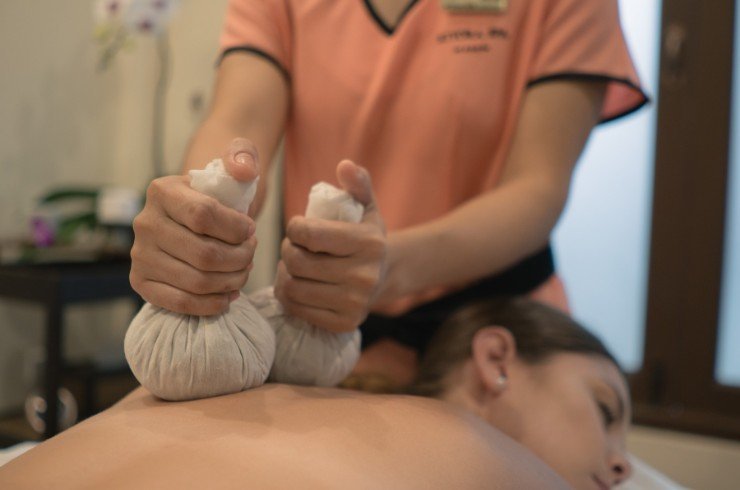
This treatment is fantastic for easing sore muscles, improving blood circulation, and relieving tension. It’s the perfect choice if you’re looking to relax, rejuvenate, and restore balance to your body—an experience that leaves you feeling both refreshed and revitalized.
Trigger Point Therapy
Trigger point therapy targets specific tight areas in the muscles known as “trigger points” that cause pain in other areas of the body. By applying direct pressure, this technique can alleviate referred pain and improve muscle function.
It’s especially helpful for people dealing with migraines, back pain, or tension headaches.
Lymphatic Drainage Massage
Lymphatic drainage massage stimulates the lymphatic system to help remove toxins and waste from the body. Gentle strokes are used to encourage lymph fluid to flow more freely.
This technique can boost the immune system, reduce swelling, and improve overall health. It’s often recommended after surgery or for people with water retention.
Sports Massage
Sports massage is designed for athletes and active individuals. It focuses on areas of the body that are prone to injury, like the back, shoulders, and legs. Techniques include stretching, kneading, and friction to prevent injury and aid recovery.
Athletes often use sports massage to stay in peak condition and bounce back faster from training.
Hot Stone Massage
Hot stone massage uses heated stones to relax tight muscles and improve circulation. The stones are placed on specific points of the body, helping to release tension and promote relaxation.
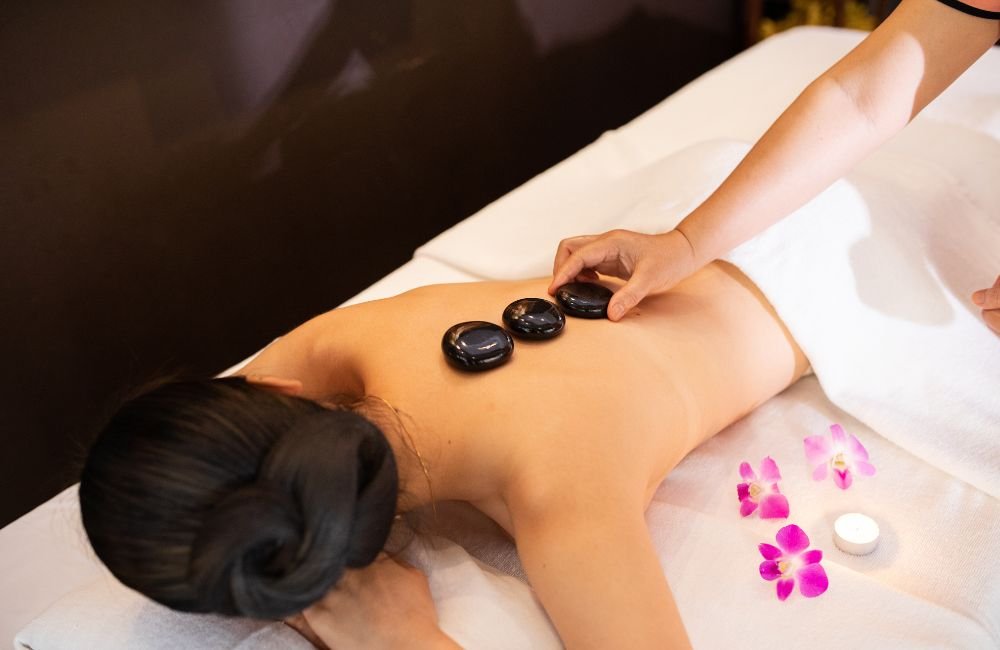
This type of massage is particularly beneficial for those with chronic pain or stress. The heat helps relax the muscles while the pressure provides deep relief.
How Often Should You Get a Massage?
Massage frequency depends on your lifestyle, health goals, and body’s needs. Some might need it weekly for stress, while others may find monthly sessions enough. Let’s dive into factors that affect how often you should treat yourself to a massage.
Factors Influencing Massage Frequency
Your activity level, stress, and muscle health play a big role. If you’re highly active or have chronic pain, more frequent massages may be necessary. People with sedentary jobs or high-stress levels might also benefit from more regular massages. If your muscles are tight, a weekly massage could help relieve tension and boost energy.
Recommendations for Various Lifestyles
For athletes or those with intense physical routines, weekly massages can enhance performance and recovery. If you work a desk job or experience stress, bi-weekly sessions may keep you balanced. For general health maintenance, once a month can help you stay relaxed and manage any ongoing tension.
What to Expect During a Massage Session
A massage session is all about relaxation, healing, and personalized care. Knowing what to expect can ease any first-timer nerves and make the experience even better. Let’s break down each stage, from consultation to aftercare.
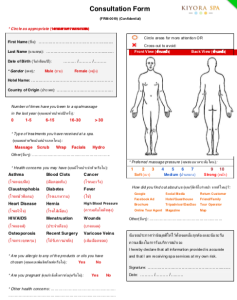 Initial Consultation
Initial Consultation
Before the massage begins, you’ll have a brief chat with the therapist about any concerns, injuries, or preferences. This helps tailor the session to your needs, ensuring the right techniques are used. It’s a chance to voice how much pressure you prefer and any areas of tension.
Massage Techniques Used
Depending on your needs, the therapist may use techniques like Swedish massage for relaxation or deep tissue for muscle knots. They may incorporate gentle strokes or firm pressure to target specific areas. Your therapist will adjust to what feels best for you, ensuring you leave feeling rejuvenated.
Post-Massage Care
After your massage, drink plenty of water to help flush out toxins released during the session. It’s normal to feel a little sore, especially if the massage was deep. Stretching gently can also help keep your muscles relaxed, prolonging the benefits of the session.
Are There Any Risks Associated with Massage Therapy?
Massage therapy is generally safe and offers many benefits, but like any treatment, there are some risks to consider. While rare, certain side effects can occur, and it’s important to know when to be cautious. Here’s what you should keep in mind.
Potential Side Effects
Some people may experience soreness after a massage, especially if it’s deep tissue or focuses on tight muscles. This discomfort usually fades within a day or two. Additionally, lightheadedness or dizziness can occur if too much pressure is applied or if you’re not hydrated before the session.
Contraindications
Massage therapy might not be suitable for everyone. If you have certain health conditions like blood clots, fractures, or infections, massage could worsen your symptoms.
Pregnant women should avoid certain techniques unless approved by their doctor. Always check with a healthcare professional if unsure.
When to Consult a Healthcare Professional
Before scheduling a massage, consult your doctor if you have any medical concerns. This is especially important if you’re recovering from surgery, have severe pain, or suffer from chronic health issues. Your healthcare provider can help guide you in choosing the right therapy to complement your treatment.
Why Chiang Mai is the Perfect Destination for Massage Therapy
Chiang Mai is renowned for its exceptional massage culture, combining ancient Thai healing traditions with modern wellness practices. Whether you’re looking for relaxation, pain relief, or a therapeutic experience, Chiang Mai offers a wide range of high-quality options tailored to every need
A Haven for Wellness Seekers
With its serene environment and rich cultural heritage, Chiang Mai is a perfect destination for relaxation and rejuvenation. The city’s peaceful atmosphere and beautiful surroundings create the ideal setting for a healing massage experience that enhances both physical and mental well-being.
Moreover, Chiang Mai attracts both tourists and locals who have a deep understanding of what a quality massage entails, ensuring that visitors can find skilled therapists offering authentic, effective treatments to promote overall wellness.
A Hub for Skilled Therapists
Chiang Mai is home to skilled massage therapists trained in a variety of techniques, thanks in part to top-quality massage schools in the area. These schools ensure that therapists are not only highly skilled but also familiar with the expectations of tourists who understand what a good massage feels like.
Whether you’re seeking traditional Thai massage, aromatherapy, or deep tissue therapy, the expertise in Chiang Mai ensures a professional, authentic experience that makes it a top destination for those looking for high-quality massage therapy.
Experience the Best Massage in Chiang Mai
If you’re wondering where to get the best massage in Chiang Mai, the city offers a range of exceptional spas and therapists that combine traditional techniques with modern wellness practices.
Choosing a reputable spa ensures you experience the full therapeutic benefits of your massage. Kiyora Spa, for example, is known for providing a professional and relaxing environment, ensuring a quality massage experience tailored to your needs. Find out more about the best places for massage in Chiang Mai here.
Conclusion
Massage therapy is more than just a luxury—it’s a holistic approach to enhancing physical and mental well-being. The benefits of massage extend from reducing muscle tension and improving circulation to boosting your mood and promoting deep relaxation. Whether you’re dealing with chronic pain, stress, or simply looking to unwind, massage offers a therapeutic escape that supports both body and mind.
Recap of the Benefits of Massage
The benefits of massage are undeniable. It helps alleviate pain, reduce stress, and enhance blood flow. From the gentle strokes of a Swedish massage to the targeted pressure of deep tissue therapy, each style offers unique advantages.
Many who embrace regular massage sessions notice improved sleep, reduced anxiety, and faster workout recovery—testament to how powerful touch can be.
Encouragement to Incorporate Massage into Regular Wellness Routines
Embracing wellness through massage in Chiang Mai can truly transform your self-care routine. Massage isn’t just an occasional indulgence—it’s a proactive step toward achieving lasting physical and emotional balance.
By incorporating regular massage sessions into your lifestyle, you’re investing in your long-term health and happiness. The healing touch of skilled therapists, combined with the serene ambiance of Chiang Mai’s top spas, can rejuvenate your body, calm your mind, and uplift your spirit. Make massage a habit, and let your well-being flourish.




